How to attract birds into your garden
Want to encourage wildlife by learning how to attract birds into your garden? Follow these helpful hints!


Learning how to attract birds into your garden can be fun and rewarding – and being mindful of giving them a helping hand could be invaluable for protecting declining species.
Although the kids might have gone back to school now, getting outside identifying different bird species is a fun activity to do with them each day. And you'd be surprised how many different species of bird can be found in your garden! So put up some bird feeders and birdhouses and keep your bird baths clean and full of fresh water to help attract as many visitors as possible.
Depending on what feed you put out for our feathered friends, or what habitats your garden has to offer you could spot a Goldfinch, Bluetit or Robin Red Breast. This guide will show you how to identify the most common species of bird and how to make your garden a welcoming environment for them, then check out our top tips on how to make your garden more eco friendly.
Top tip for attracting garden birds
1 As well as the different seed mixes that can be put in feeders or scattered on bird tables or the ground, many of the foodstuffs you might throw away provide suitable foods for birds. Leftover grated cheese, cooked potatoes, pastry, porridge oats, unsalted bacon and apples and pears are all popular treats and provide our birds with vital energy.
2 Birds need to drink as well as eat, so give yourself an armchair view of a birdbath and keep your phone handy for taking pics.
3 Untidy borders will act as magnets, so leave dead heads on plants to attract chaffinches and greenfinches.
4 Don’t clear up all the leaves either, so carnivorous birds, like robins and blackbirds, can scratch around for mini beasts.
GOLDFINCH
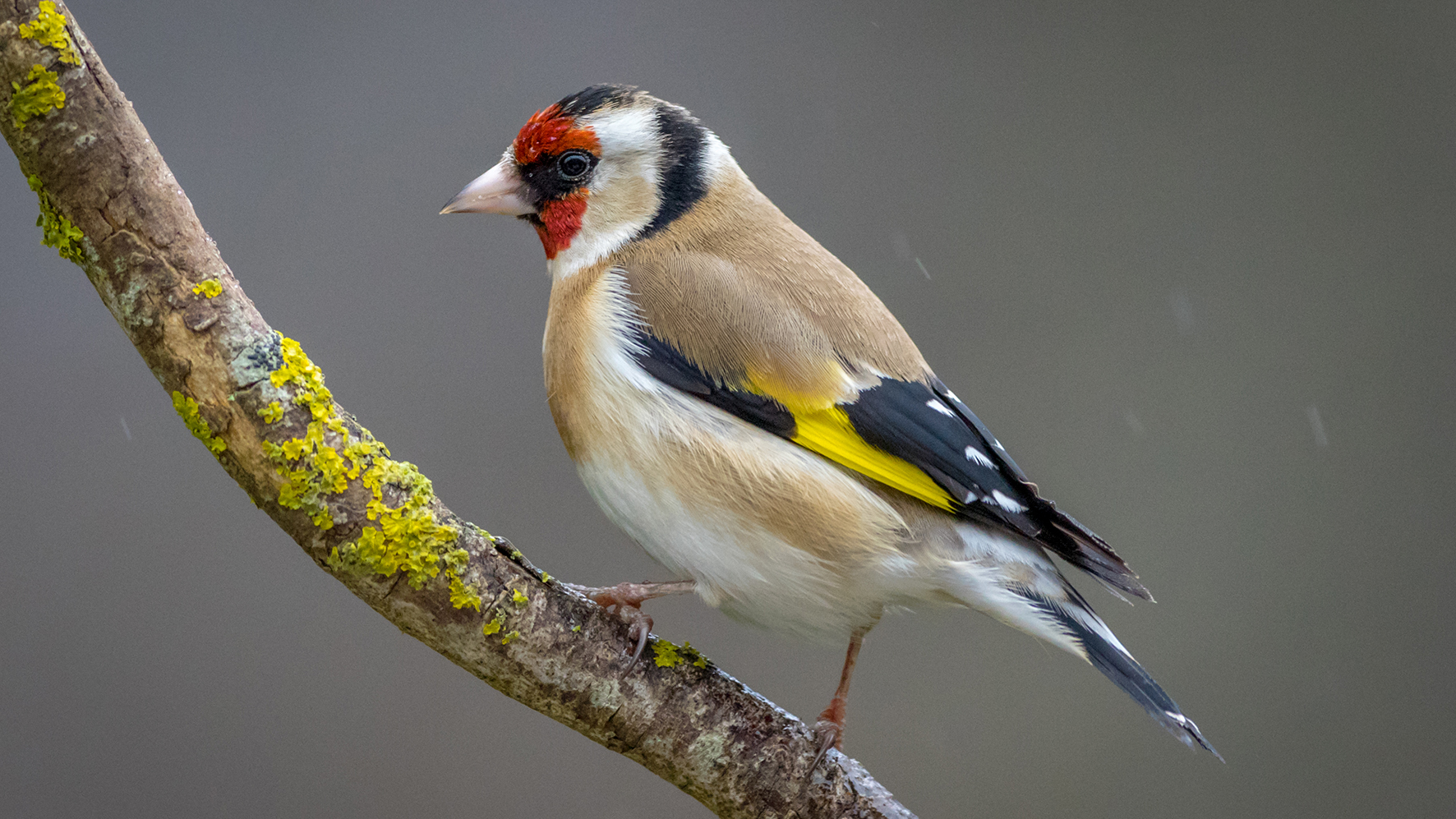
These beauties bring some vibrant colour to our gardens – you can spot them by looking our for their unmistakable golden-brown plumage, yellow wing patches, splashes of black and bright red faces.
In your garden they will search out thistles, teasels and dandelions to extract the seed with their tweezer-like bills. Keep your eye high in the trees as that is where they will nest. They use grass, moss and wool to build their home, with a few flowers for decoration.
HOUSE SPARROW
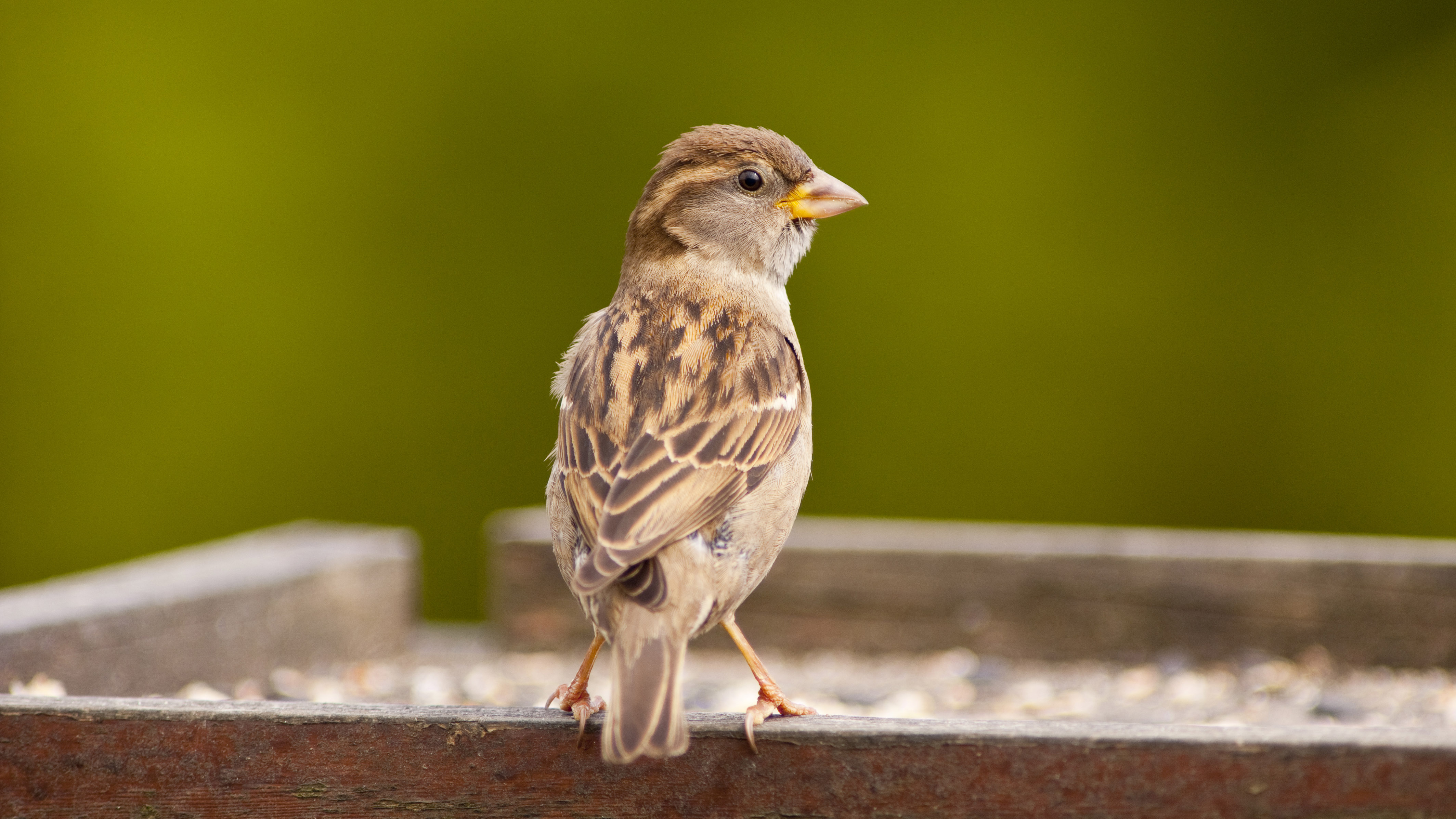
Noisy and outgoing, these cheering little birds can be found almost everywhere, from the centres of cities to farmland. So whether you're out for a walk in the country, in a local park or just in your own back garden, keep an eye out for these small light brown birds.
They like to nest in holes and crevices of buildings and readily use nest boxes. They eat seeds and scraps and will appreciate sunflower hearts and suet balls in feeders and on tables.
Think twice before blocking up any ‘irksome’ holes in buildings, where they would usually nest in colonies. Alternatively, why not build a ‘sparrow street’ of nest boxes and mount them under the eaves of your home?
ROBIN
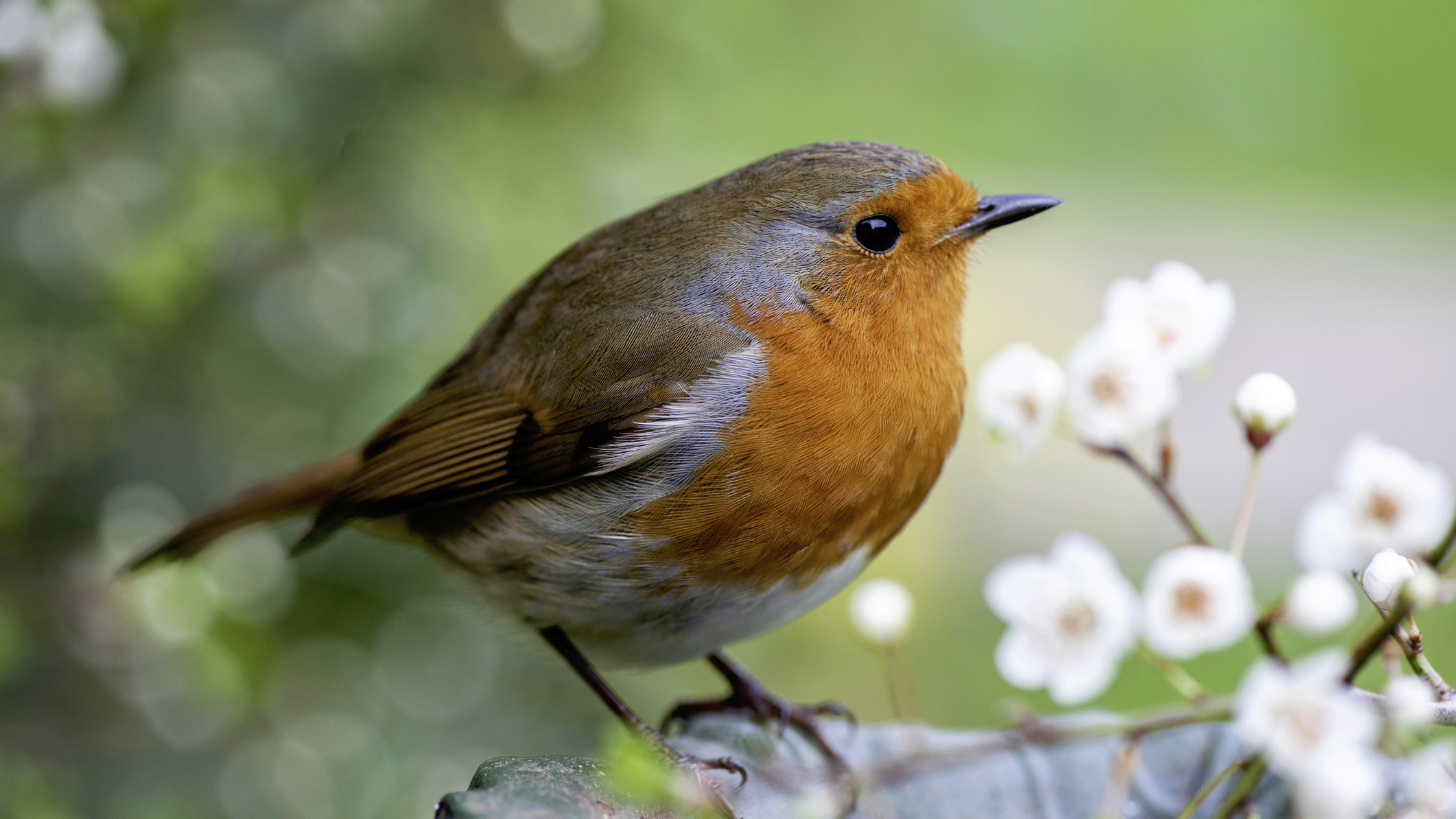
The robin, with its distinctive red breast, wears the crown of being Britain’s favourite bird. Provide an open-fronted nest box and watch them line it with leaves, grass, moss, roots and human hair, ready for egg laying.
Avoid providing whole peanuts (a wire feeder is fine), fat and bread, all of which can choke chicks.
If you manage to keep very quite and get a good look at them, look at the brown marking on the robin’s forehead. In females, it’s likely to be V-shaped, in males, U-shaped.
BLUE TIT

Hyperactive little birds, blue tits have showy plumage that is pale grey and white on the tail, and wings with a green-blue back and mantle. Their heads are predominantly white with a blue cap, dark blue collar and chin, plus a black eye stripe.
They happily nest in man-made boxes and feed on caterpillars, as well as suet and fat balls. Avoid putting out food that has mesh or netting around it. Birds’ beaks and feet get trapped, causing severe injury or death.
GREENFINCH
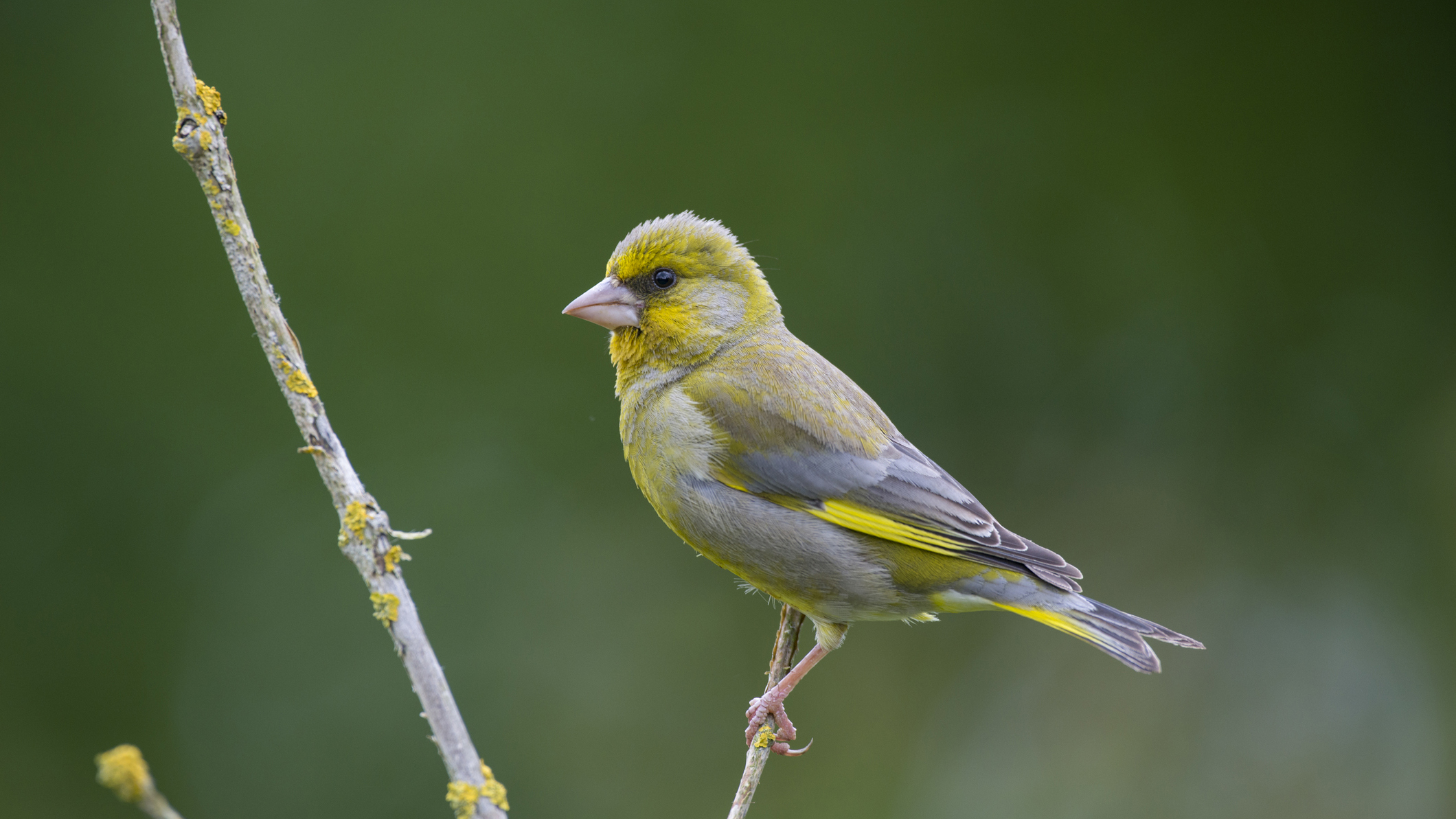
Its twittering song and splash of yellow and green as it flies make this finch a colourful character. Where there’s a tree or bush, there will likely be a greenfinch, although sadly fewer than there used to be.
The female looks brown, but once she flies off you’ll see the yellow in her tail and wings. Greenfinches mainly eat nuts and seeds, and enjoy sunflower seeds and hearts, peanuts and nyjer seed in particular.
BLACKBIRDS
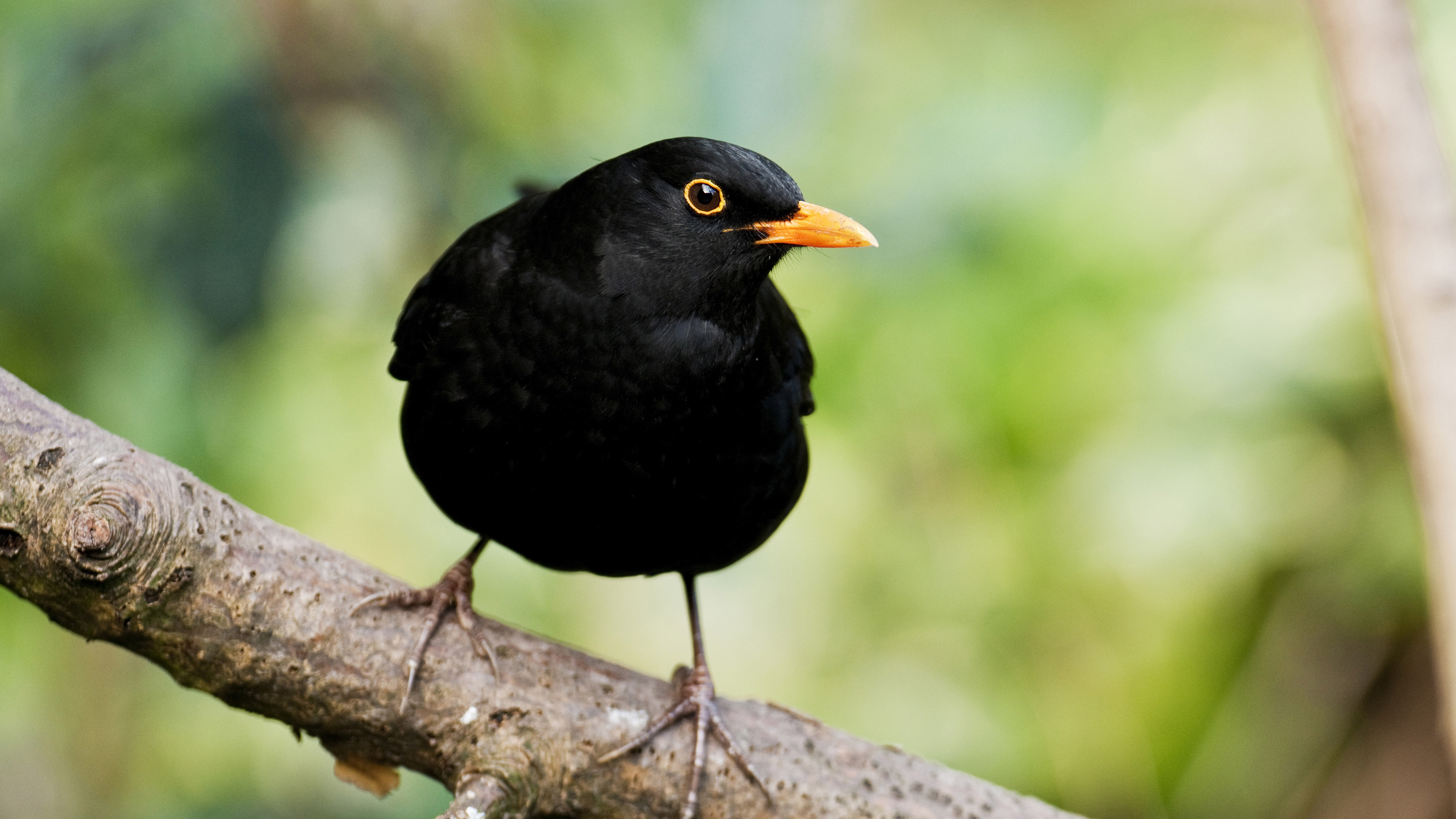
Male blackbirds live up to their name but, confusingly, the females are more brown. Male blackbirds are also easily recognised by their striking orange beaks and eye rings. They breed from March to July and can have up to four sets of chicks. Their nests are usually found low down in places like trees or shrubs but they also nest on buildings and occasionally even on the ground.
Their nests are a ‘cup’ shape and take two weeks to complete. They are master builders and the nests need to be strong enough to cope with their four broods! Blackbirds are great at pulling big juicy worms out of the ground and will also eat sunflower hearts, suet cake and fruity nibbles.
STARLINGS
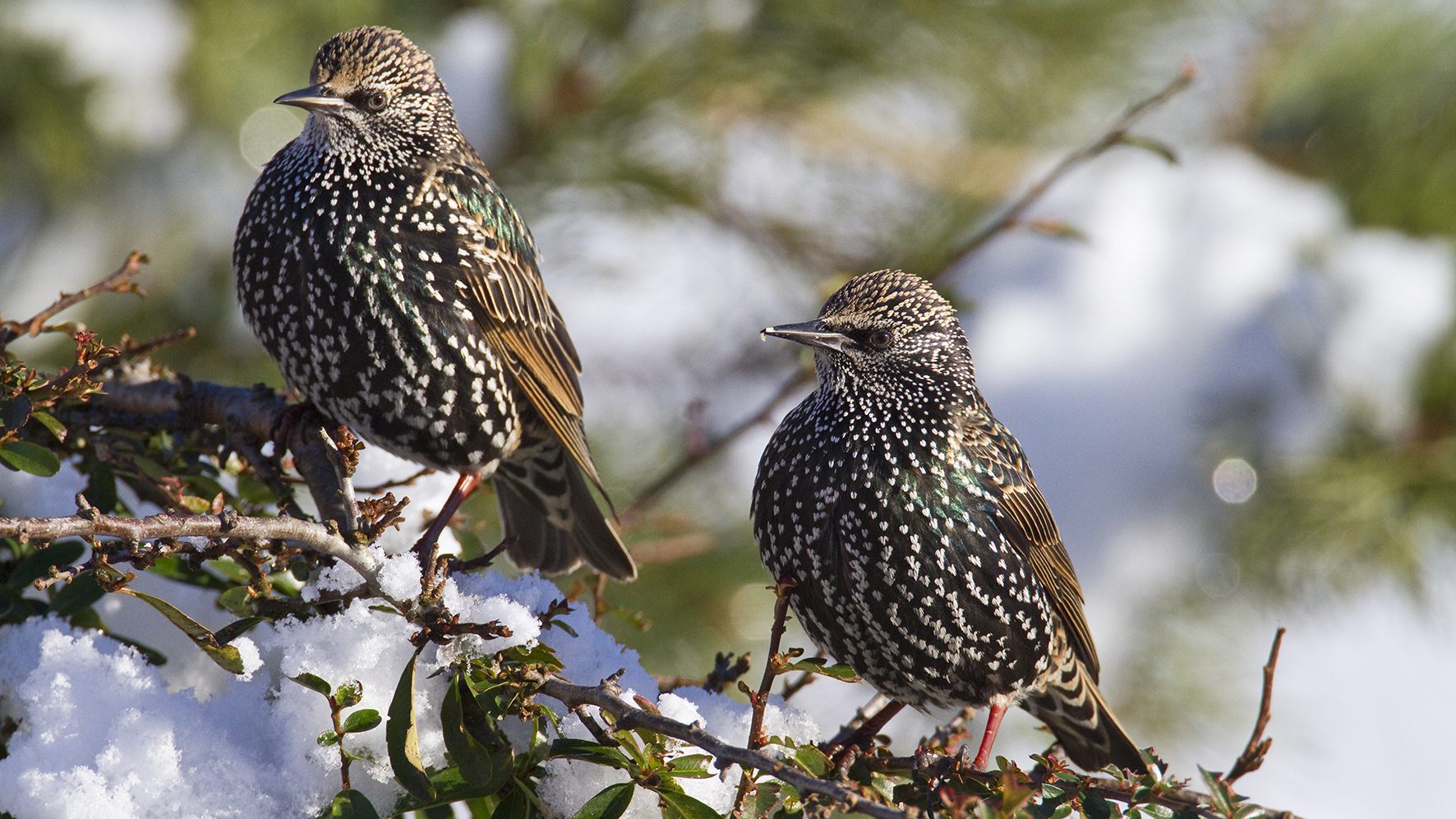
Starlings spend much of their time in flocks. They look black from a distance, but when you get closer they are glossy, with a sheen of purples and greens. One of the most common garden birds, you will surely spot them searching for worms in the grass after a wet night.
Starlings eat most seed mixes, including sunflower hearts and suet cake, and will eat from feeders and off the ground.
CHAFFINCH
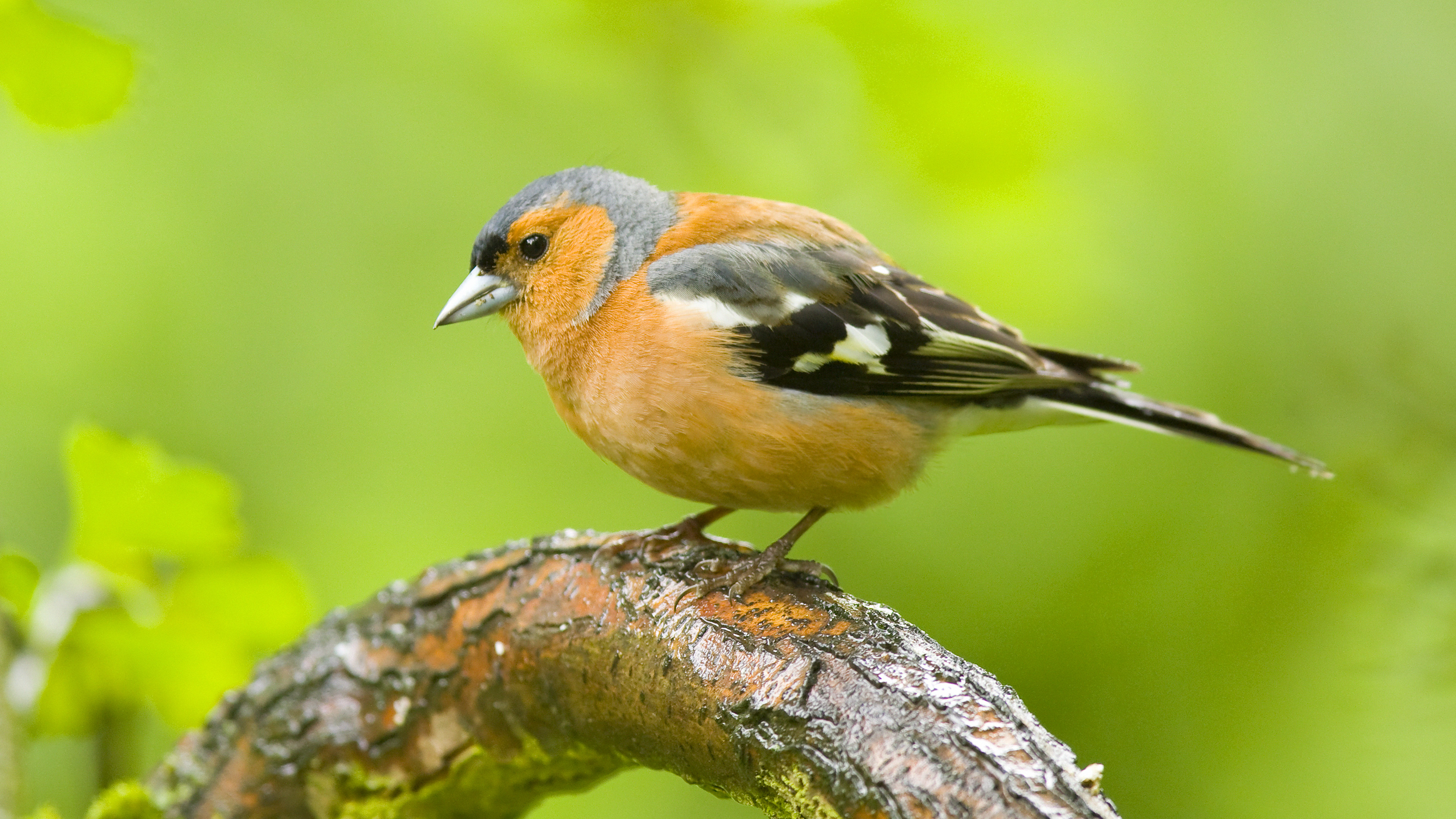
As one of the most colourful garden birds, chaffinches have feathers that help them to blend in when feeding on the ground. They become most obvious in flight, revealing a flash of white on the wings and tail, which complements the pink-orange colour they’re recognised for.
They aren't huge fans of bird feeders and they prefer to hop about under bird tables or hedges. They especially enjoy sunflower hearts and black sunflower seeds.
More advice:
- The best bird feeders: keep feathered friends well fed all year long
- Garden ideas for kids: children will have hours of fun outside with these ideas
- Attract garden pollinators with the best bee-friendly plants
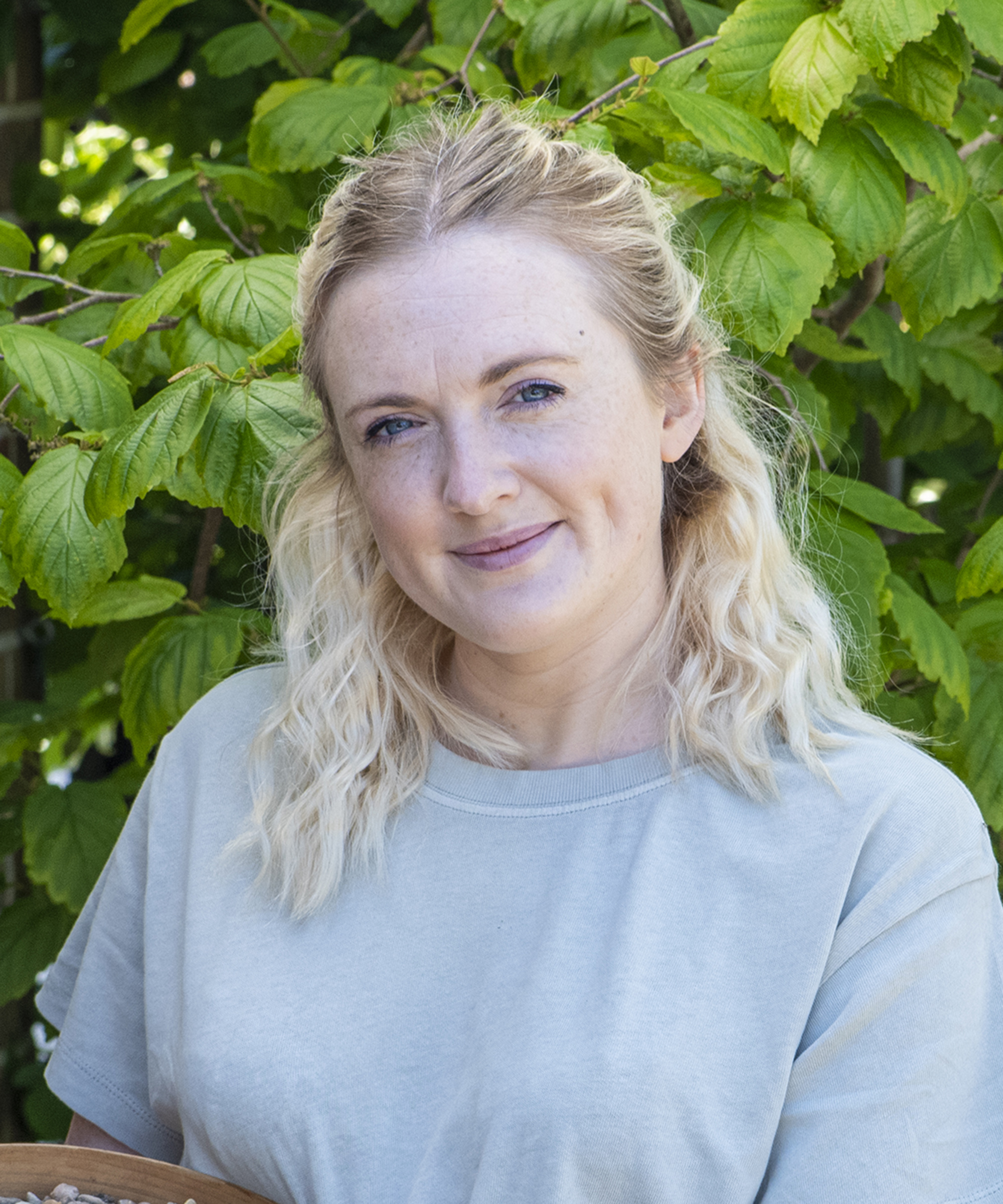
Teresa has worked as an Editor on a number of gardening magazines for three years now. So she is lucky enough to see and write about gardening across all sizes, budgets and abilities. She recently moved into her first home and the garden is a real project! Currently she is relishing planning her own design and planting schemes. What she is most passionate about when it comes to gardening are the positive effects it has on our mental health to grow and care for plants, as well as being great for the environment too and help provide food and shelter for wildlife.
